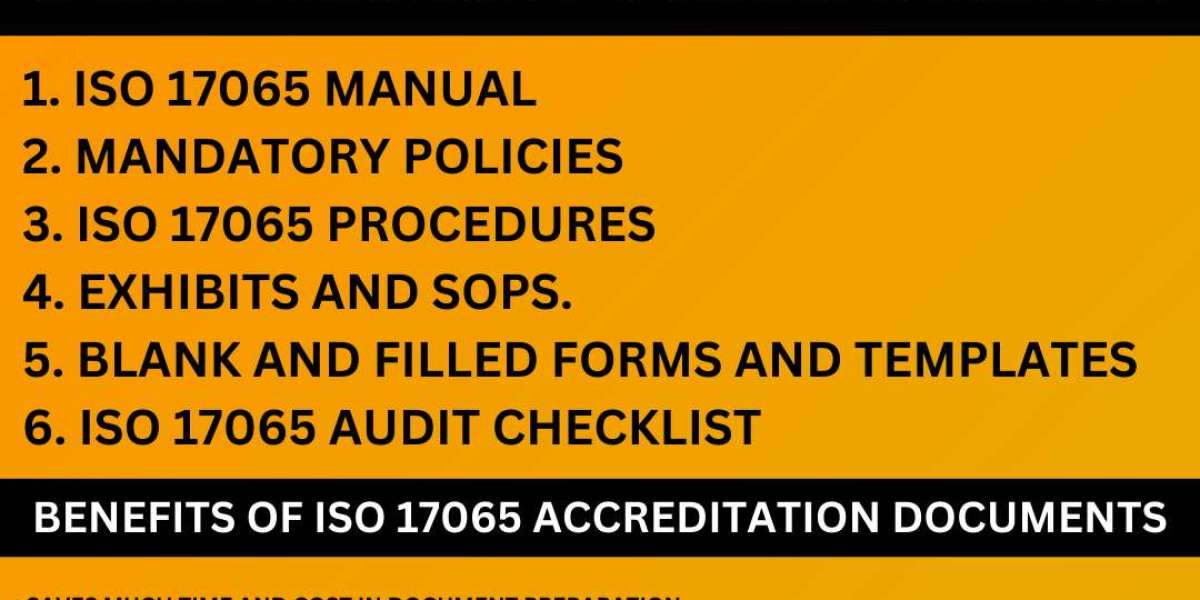Product certification plays a critical role in assuring customers that goods and services meet specific safety, performance, or regulatory standards. To carry out such responsibilities, certification bodies must operate with a high level of integrity, impartiality, and technical competence. This is where ISO/IEC 17065 comes into the picture — an internationally recognized standard designed for bodies certifying products, processes, or services.
One of the fundamental requirements of this standard is the preparation and implementation of a structured ISO 17065 manual and a set of documented ISO 17065 procedures. These documents form the backbone of the certification body’s management system and ensure consistent, transparent, and credible operations.
Understanding ISO 17065 Documentation
ISO 17065 documents are a comprehensive collection of policies, processes, procedures, and forms that define how a certification body operates in compliance with the standard. These documents address various functional areas including impartiality, confidentiality, competence, process control, complaint handling, and decision-making.
The ISO 17065 documentation typically includes:
- Quality Manual
- Policy Statements
- Process Flowcharts
- Standard Operating Procedures (SOPs)
- Work Instructions
- Forms and Records
Among these, the ISO 17065 manual serves as a central document that outlines the scope, structure, and objectives of the certification body’s quality system. It also references key procedures and explains how compliance with ISO 17065 is achieved and maintained.
Why These Documents Are Vital?
1. Demonstrating Accreditation Readiness
To achieve accreditation under ISO 17065, a certification body must demonstrate that its processes are effectively managed and consistently implemented. Without properly documented procedures and a clear quality manual, this would be nearly impossible. These documents provide external auditors and stakeholders with evidence that the organization is in control of its operations.
2. Ensuring Consistency and Impartiality
Certification decisions must be based on objective evidence and consistent evaluation methods. By documenting the ISO 17065 procedure for activities such as application review, audit planning, evaluation, decision-making, and certificate issuance, certification bodies ensure impartial and repeatable results.
3. Improving Operational Efficiency
Well-defined documentation reduces confusion, eliminates redundancies, and promotes uniformity across teams. Staff can refer to the ISO 17065 manual and associated procedures to understand their roles, responsibilities, and the correct way to perform tasks, especially when handling complex or sensitive certification processes.
4. Managing Risk and Accountability
The documentation required by ISO 17065 includes policies for handling complaints, appeals, and nonconformities. These components are crucial for managing risks and maintaining credibility. With proper records and procedures, certification bodies can respond swiftly to issues, demonstrate accountability, and continuously improve.
5. Enhancing Client Trust and Market Recognition
Clients seek assurance that their certification is being handled by a competent, compliant body. Adherence to documented ISO 17065 procedures reinforces the organization’s professionalism and commitment to quality. It also signals to regulators and accreditation bodies that the certification body operates with transparency and competence.
Maintaining and Updating ISO 17065 Documents
Maintaining up-to-date and controlled documentation is just as important as creating it. Certification bodies must implement document control mechanisms to ensure:
- Only the latest approved versions of documents are in use
- All employees have access to relevant procedures
- Historical versions are archived for reference
- Changes are tracked and reviewed
Regular internal audits and management reviews help in identifying areas where procedures can be improved or where documentation needs revision.
Conclusion
In conclusion, the ISO 17065 manual and related ISO 17065 procedures are not merely paperwork — they are strategic tools that underpin the credibility, integrity, and effectiveness of a certification body. These documents enable certification bodies to demonstrate competence, operate consistently, and meet both client and regulatory expectations. For any organization aiming to establish or maintain ISO 17065 accreditation, investing in robust, well-organized documentation is a foundational step toward long-term success.



